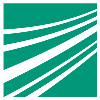Master Thesis - Kaiserslautern, Deutschland - Fraunhofer-Gesellschaft
Beschreibung
The Fraunhofer-Gesellschaft, the resulting safety requirements to address critical failures are typically organized in requirements management tools like ReqSuite. A related challenge is to keep the defined conceptual links between distinct artifacts like mínimal cut sets and the safety requirements consistent so that the resulting safety case is maintainable and consistent over time. Currently, changes done to one artifact in a specific tool cannot be reflected to related artifacts defined in another tool and have to be tracked and navigated manually. Within the H2020 Dependability Engineering Innovation for Cyber Physical Systems (DEIS) project, the open dependability exchange (ODE) metamodel has been introduced to provide a blueprint for a tool-independent representation of the necessary safety engineering artifacts integrated and formally connected to each other in a Digital Dependabilty Identity (DDI) model. Additionally, within the DEIS project, a tooladapter was implemented to allow exporting and importing DDIs from and to arbitrary tools. This allows the engineer to exchange and integrate the different artifacts into a single DDI model to establish the necessary traceability.
Problem
The currently ongoing project AutoDevSafeOps (ADSO) seeks an approach, how field data collected by already deployed autonomous vehicles (AV) at runtime can be transferred back to and be utilized within next development cycles for software updates to incrementally increase the functionality and reliability of the AV.
Monitored runtime data, fed back into the development phase, probably will lead to changes/extensions of (safety-) requirements, which again will have an impact on the implemented functionality that fulfilled the requirements of the older version.
Thus, a flawless traceability between requirements and corresponding safety engineering artifacts is essential to perform the change impact analysis.The requirement management software ReqSuite from OSSENO and safeTbox are planned to be used within the ADSO project as tools to perform model-based safety change impact assessment.
Therefore, safeTbox shall be used to generate, among other artifacts, the safety argumentation and component fault trees for the safety analysis.
The safety requirements relevant for the failure analysis shall be defined within ReqSuite.What you will do
The contribution of this master thesis is to generate insight on approaches to establish formalized traceability between safety engineering artefacts modeled in safeTbox and requirements defined using ReqSuitewith the assistance of the existing DDI tooling framework.
Afterwards, a middleware concept and associated protocol shall be defined, which allows a loose integration between safeTbox and ReqSuite with the DDI tool framework as a mediating component.
Finally the middleware is prototypically implemented and safeTbox is customized, so that Osseno's requirement management can also be used within safeTbox, where requirements can be linked to safety engineering artefacts.
The envisioned traceability concept and its realization as part of the DDI tooling framework shall be sufficiently generic so that it can be used in the future to establish traceability between other safety engineering artifacts across tools, too.
Evaluation
Concept and prototypical implementation will be evaluated within an example use case, where
a safeTbox user shall be able to create and edit safety requirements for mínimal cut sets from the component fault tree analysis.
The traceability shall be created in the respective DDI model and shall be persistent so that it can be processed both from within safeTbox, ReqSuite and by DDI scripts processing a DDI independent of a specific tool.
Task focus:
Theory (20%); Conception (30%); Implementation & Evaluation (30%); Documentation (20%)
What you bring to the table
- You are studying computer science
- You're keen to solve nontrivial challenges regarding distributed software architectures for a realworld problem
- You have handson experience in objectoriented programming concepts and languages (preferable Java)
- You can identify and model the important UML views of a software architecture to reduce complexity and prepare design decisions.
- You had first contact with modeldriven engineering and serviceoriented architectures (e.g. Eclipse Modeling Framework, Eclipse Epsilon, Apache Thrift)
What you can expect
- You contribute to a safer society through improving our safety engineering tools
- You are taught how to properly perform a small research project from beginning to end
- You get experience in using stateoftheart requirements and safety engineering tools
- You get experience in serviceoriented architectures applied to a realworld problem
- You get insight in
Mehr Jobs von Fraunhofer-Gesellschaft
-
Abschlussarbeit - auslegung Von Wärmepumpenanlagen
Freiburg, Deutschland - vor 3 Wochen
-
Projektleiter/in Functional Safety
Dresden, Deutschland - vor 4 Wochen
-
Sachbearbeiter in Buchhaltung
Darmstadt, Deutschland - vor 3 Wochen
-
Referent in
Erlangen, Deutschland - vor 3 Wochen
-
Masterarbeit: Human Resources Development
Dresden, Deutschland - vor 2 Wochen
-
Bildredakteur in in Teilzeit
Munich, Deutschland - vor 5 Tagen

